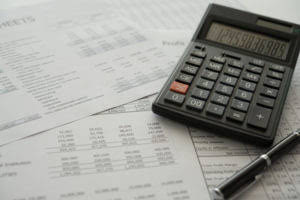
They are not appropriate for investors seeking strong growth potential or a say in company decisions. Let’s Medical Billing Process say that a company has authorized 10,000 shares of stock, and it has sold 8,000 of these shares to investors. The ownership of outstanding shares spreads among several shareholders, with no single shareholder controlling the company. However, some shareholders own a considerable portion of the outstanding shares and hence have more control over the company’s decisions and outcomes. Companies that have simple capital structures only need to report basic EPS. Those with complex structures, including potential dilutive securities, must report both basic EPS and diluted EPS.

Calculator Instructions

When you buy stock in a company, you are buying an ownership stake, which is issued as a share of stock. The number of shares outstanding of a company can be found in its quarterly or calculate number of shares outstanding annual filings (10-Qs or 10-Ks). And so, for a loss-making company, potentially dilutive shares can be excluded if they are “anti-dilutive”.

How to Calculate the Number of Shares a Company Has
Increasing treasury shares will always result in decreases and vice-versa. Corporations have a certain number of authorized shares of common or preferred stock. However, just because a corporation is authorized to issue stock doesn’t mean that it has to issue all of those shares.

How Outstanding Shares Work
In the above example, if the reporting periods were each half of Online Accounting a year, the resulting weighted average of outstanding shares would be 150,000. Thus, in revisiting the EPS calculation, $200,000 divided by the 150,000 weighted average of outstanding shares would equal $1.33 in earnings per share. Investors use these shares to check stock and calculate market capitalization. This post will give you a step-by-step approach to estimating these shares.
Outstanding Shares Definition and How to Locate the Number
- Investors investing in Alphabet shares should carefully assess the features of each class of share and consider their personal investment goals and risk tolerance before making an investment decision.
- This is the calculated number of days from the beginning date to the ending date.
- Heavy trading by closely held shareholders could also affect the stock’s weighting impact in free float capitalization indexes.
- If you’re going to become an investor, there are a few things you should know — like these formulas.
- Therefore, the company currently has authorized 5,000 shares and has 2,000 shares issued and outstanding.
The calculation of weighted average shares outstanding is a nuanced process that takes into account the timing and magnitude of changes in a company’s share count throughout a reporting period. This method provides a more accurate reflection of a company’s share structure, as opposed to a simple average, which might overlook significant fluctuations. Outstanding shares change constantly and are used to calculate a company’s market capitalization. Market cap is found by multiplying the total shares outstanding by the current price per share. Therefore, a company with 10 million shares outstanding and a share price of $5 has a market cap of $50 million.
- Outstanding shares are the aggregate number of shares that a corporation has issued to investors.
- In corporate financial analysis, Earnings Per Share (EPS) is one of the most closely followed indicators of performance.
- The weighted average corrects for this by assigning greater weight to shares that were outstanding for a longer portion of the reporting period.
- Changes in outstanding shares can influence a company’s stock price, impacting investor sentiments.
- CFI is the global institution behind the financial modeling and valuation analyst FMVA® Designation.
- On the other hand, the fully diluted shares outstanding calculation takes into account diluting securities such as convertibles (warrants, options, preferred shares, etc.).
